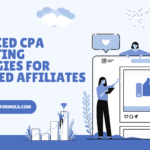Welcome to my article “Step-by-Step Guide to Making Money Online with Freelancing” Freelancing—it’s like running your own business, minus the annoying boss, 9-to-5 grind, and office politics. Sounds dreamy, right? But before you start imagining yourself sipping margaritas on a beach while “working,” let’s get real. Freelancing isn’t just about freedom; it’s also about hustling, learning, and mastering the art of getting clients to actually pay you. The good news? Anyone with a marketable skill, a laptop, and a Wi-Fi connection can dive into this ever-expanding gig economy.
Whether you’re a graphic designer, writer, coder, or even someone who knows how to organize emails like a ninja, there’s a place for you in the freelancing world. In fact, reports suggest that over half of the global workforce is expected to freelance in some capacity by 2030. So why not jump on the bandwagon now? You’ll be ahead of the curve, and let’s face it—being your own boss beats sitting through another awkward Zoom meeting about synergy.
This guide is here to help you navigate freelancing from scratch. We’ll cover everything from choosing your niche (because “I’ll do anything” isn’t exactly appealing) to finding clients who’ll actually pay you what you’re worth. Along the way, you’ll also learn how to build killer relationships with clients and scale your freelancing hustle into a legit business. Ready to turn your skills into cash? Let’s dive in—no suits required, but coffee is highly recommended!
Access My Proven Tested Formula for $50-$100 Daily Income – Watch This FREE Video Now >>>

Understanding Freelancing and Choosing Your Niche
Freelancing might sound like the wild west of employment—unstructured, unpredictable, and utterly chaotic. But here’s the kicker: it’s actually a strategic playground where you get to call the shots. At its core, freelancing means selling your skills or services directly to clients, often on a project-by-project basis. No HR department, no clocking in, and—best of all—no office small talk about how “crazy the weather’s been.” You’re the CEO of You Inc., and your only mission is to deliver value while getting paid (preferably on time).
Now, before you dive in headfirst and proclaim, “I can do everything!”—stop. Freelancing isn’t about being a jack-of-all-trades; it’s about being a master of one (or a select few). This is where choosing a niche comes in. Think of your niche as your freelancing superpower. It’s what sets you apart in a sea of other freelancers waving their virtual resumes. When clients are searching for someone to solve their specific problem, they’re not looking for “a little bit of everything.” They want an expert.
So how do you choose your niche? Start by doing some self-reflection—yes, it’s time for that deep soul-searching moment (cue the dramatic music). Ask yourself:
- What am I really good at? Whether it’s writing, graphic design, coding, or organizing someone’s inbox like a pro, identify your top skills.
- What do I enjoy doing? Freelancing isn’t just about making money; it’s also about doing work that doesn’t make you dread Mondays.
- What’s in demand? Check freelancing platforms like Upwork or Fiverr to see what skills are hot. Bonus points if your niche overlaps with what people are willing to pay for.
Still unsure? Test the waters. Start with a couple of niches that interest you, then see which one sticks. Remember, choosing a niche doesn’t mean you’re stuck with it forever. It’s more like picking your lane on a multi-lane highway—you can always switch if traffic gets slow.
In freelancing, your niche isn’t just your expertise; it’s your brand. And when you get it right, it’s what makes clients say, “That’s the person I need!” So take your time, find your sweet spot, and prepare to show the world what you’ve got. Who knows? You might just become the go-to person in your field—and yes, you can totally put that on your LinkedIn.
How does that feel? Let me know if you’d like me to expand further or add anything specific!
Building a Portfolio and Crafting an Irresistible Profile
Let’s face it: in the freelancing world, your portfolio is your handshake, elevator pitch, and first impression all rolled into one. Think of it as your digital stage, where you show potential clients exactly why you are the hero they need for their project. Without a strong portfolio, landing gigs can feel like trying to sell ice to a penguin—it’s just not going to happen.
So, where do you start? First, banish the idea that you need tons of experience to build a portfolio. Everyone has to start somewhere, and here’s the secret: fake it ‘til you make it. No, I’m not saying lie about your experience (don’t do that unless you want to be ghosted by clients). Instead, create mock projects to showcase your skills. For example, if you’re a graphic designer, whip up a sleek logo for an imaginary brand or redesign an existing company’s website for fun. Writers? Craft some killer blog posts or articles in your niche. Coders? Build a cool app or tool, even if it’s just for yourself.
Once you’ve got your projects, present them like a pro. Use platforms like Behance, GitHub, or even a simple WordPress website to display your work. Remember: quality over quantity. It’s better to have three polished, impressive projects than 20 mediocre ones.
Now, let’s talk about your freelancer profile—the secret sauce that gets clients clicking that magical “Hire Now” button. Start with a headline that grabs attention but keeps it professional. “Freelance Writer for Tech Startups” is way better than “I’m Good at Writing Stuff.” Follow that with a killer bio:
- Introduce yourself. Who are you, and what do you bring to the table?
- Highlight your expertise. Focus on the services you offer and the value you provide.
- Add a sprinkle of personality. Clients want to work with humans, not robots. Share a fun fact or a quirky detail that makes you memorable.
Access My Proven Tested Formula for $50-$100 Daily Income – Watch This FREE Video Now >>>
Don’t forget a professional-looking profile photo. No, your vacation selfie won’t cut it. Choose a clear, friendly headshot that says, “I’m trustworthy, capable, and ready to crush your project.”
Finally, showcase your results. Include testimonials, case studies, or stats that prove you deliver the goods. For example: “Boosted client’s website traffic by 40% in three months” or “Designed a logo that received rave reviews from stakeholders.” If you’re just starting and don’t have client feedback yet, don’t sweat it—your portfolio projects can speak for themselves.
A strong portfolio and an irresistible profile aren’t just tools to get noticed; they’re your ticket to freelancing success. So go ahead, polish your work, craft a profile that shines, and get ready to watch those opportunities roll in. Because when clients see your awesomeness, there’s no way they’ll swipe left!
Does this capture the vibe you’re going for? Let me know if you’d like to refine or add anything!
Managing Freelance Projects and Building Client Relationships
Freelancing isn’t just about landing clients—it’s about keeping them happy without losing your mind in the process. If you think managing freelance projects is as simple as “do the work, get paid,” oh boy, you’re in for a ride. Freelancing is part art, part science, and part juggling act, where your ability to manage tasks and build strong client relationships can make or break your business.
Let’s start with managing projects. First things first: get organized. Whether you’re dealing with a single client or juggling a dozen, chaos is not your friend. Use project management tools like Trello, Asana, or Notion to keep track of deadlines, deliverables, and client feedback. And if you’re old-school, a trusty planner or a pile of sticky notes will do—just don’t let them take over your desk like some kind of neon-colored monster.
Next, communication is key. Be crystal clear about expectations right from the start. Define project scopes, timelines, and payment terms in writing (contracts are your BFF here). Need to adjust deadlines or scope? Communicate early and often. Trust me, clients would rather hear “I need two more days” than radio silence followed by panic-induced apologies.
Now, let’s talk about building client relationships, aka the secret sauce to long-term freelancing success. First rule: treat your clients like humans, not ATM machines. Get to know them, understand their needs, and show genuine interest in their projects. A little rapport goes a long way. Plus, happy clients are more likely to recommend you to others—think of them as walking, talking Yelp reviews.
Delivering stellar work is obvious, but here’s a pro tip: under-promise and over-deliver. Finish that project a day early, throw in an extra graphic, or polish up their website copy just a little more. Clients love surprises when they’re the good kind.
And don’t forget the follow-up. After the project is done, check in. Ask if they need further help or feedback on how your work has performed. Not only does this show you care, but it also plants the seed for repeat work. (Because who doesn’t love recurring revenue?)
Lastly, boundaries are your lifeline. Yes, building strong client relationships is crucial, but you’re not on-call 24/7. Set clear boundaries for working hours and communication. Politely but firmly explain that while you’ll always deliver on time, responding to a midnight email isn’t part of the package deal.
Managing freelance projects and building client relationships is about striking the right balance—delivering value without burning yourself out. When you nail that sweet spot, freelancing stops feeling like a hustle and starts feeling like the dream job it was meant to be. Just remember: a little professionalism, a dash of kindness, and a sprinkle of humor can turn one-off gigs into long-term partnerships. And that’s where the real money (and job satisfaction) lies.
Does this resonate with the tone and style you’re going for? Let me know if you’d like more examples or adjustments!
Mastering Funnel Optimization for CPA Campaigns
If CPA marketing were a game, your sales funnel would be the MVP—the player who sets up every winning move. A well-optimized funnel doesn’t just nudge people toward conversions; it grabs them by the hand and leads them down the yellow brick road to your “Thank You” page. But here’s the catch: funnel optimization is equal parts strategy, psychology, and a sprinkle of wizardry. Ready to level up? Let’s break it down.
Step 1: Understand Your Audience (Like, Really Understand Them)
Before you even think about tweaking your funnel, get into the minds of your audience. Who are they? What problems are they trying to solve at 2 a.m. while Googling furiously? What makes them click (literally and emotionally)?
This intel is your North Star. If your audience consists of bargain hunters, your funnel should highlight irresistible offers. If they’re professionals seeking efficiency, showcase quick, seamless solutions. Tailoring your funnel to their needs is like offering someone their favorite coffee—hard to resist.
Step 2: Craft Irresistible Landing Pages
The landing page is the grand entrance to your funnel, so it needs to dazzle. Think of it as the first date with your audience—you’ve got one shot to impress.
- Keep it simple: No one wants to read an essay. A clear headline, concise copy, and a single, focused call-to-action (CTA) work wonders.
- Focus on benefits, not features: Don’t just list what your offer does; tell them how it’ll make their lives better. “Save $500 a month” is far more compelling than “Our software tracks expenses.”
- Add social proof: Testimonials, star ratings, or case studies help build trust. People like knowing others have already taken the plunge—and survived.
Pro tip: A/B test like your life depends on it. Try different headlines, images, or CTAs to see what gets the most clicks.
Step 3: Nail Your Email Sequence
Not everyone will convert on the first visit. (Shocking, I know.) That’s where email sequences come in. A solid follow-up strategy can turn curious visitors into paying customers.
Start with a killer lead magnet—something valuable and free, like an ebook, checklist, or webinar. Once they’re in your email list, nurture the relationship. Send content that educates, builds trust, and gently guides them toward the action you want them to take.
And no, “Buy now or else!” doesn’t count as nurturing. Think subtle persuasion, not a hard sell.
Step 4: Streamline the Checkout Process
This is where too many funnels fall flat—your audience gets to the checkout page and suddenly decides they’d rather clean their garage than complete the transaction. Avoid this nightmare with these tips:
- Keep it short: Ask only for the info you absolutely need. A five-step checkout process will send people running.
- Offer multiple payment options: The more ways they can pay, the fewer excuses they have to bail.
- Reinforce trust: Add security badges, money-back guarantees, or even a friendly reminder that “Hey, we’ve got your back!”
Access My Proven Tested Formula for $50-$100 Daily Income – Watch This FREE Video Now >>>
Step 5: Analyze, Adjust, Repeat
Funnel optimization is never “done.” It’s a constant cycle of testing, tweaking, and improving. Use tools like Google Analytics or heatmaps to see where people drop off. Is your landing page bounce rate sky-high? Time to rework the copy. Are users abandoning their carts? Maybe your checkout process needs some love.
Don’t forget to track your CPA campaign ROI. If your cost per acquisition is higher than your profit, it’s back to the drawing board. But when you get it right? Oh, the sweet joy of watching those conversions roll in.
A Funnel That Converts is a Funnel That Wins
Mastering funnel optimization for CPA campaigns isn’t just about driving traffic—it’s about leading that traffic to a destination where everyone wins. With the right tweaks, a dash of creativity, and a deep understanding of your audience, you can transform a so-so campaign into a money-making machine. And who doesn’t love the sound of cha-ching?
How does this feel? Let me know if you’d like any tweaks or additions!
Scaling Your Freelancing Business for Long-Term Success
So, you’ve nailed the art of freelancing—you’re landing clients, delivering stellar work, and finally figuring out the whole “work-life balance” thing (well, kind of). But now you’re asking the million-dollar question: How do I grow this into something bigger? Scaling your freelancing business isn’t just about working harder; it’s about working smarter and setting yourself up for long-term success. Let’s dive into how you can level up from a one-person operation to a thriving freelance empire (cue the superhero music).
Step 1: Define Your Growth Goals
Before you start chasing every shiny opportunity that comes your way, hit pause and figure out what scaling means for you. Do you want to increase your income, reduce the hours you work, or build a team to handle more clients? Maybe all three?
Having a clear vision will help you focus your efforts. Without it, scaling your business can feel like throwing spaghetti at a wall and hoping it sticks. Spoiler: It won’t.
Step 2: Specialize, Don’t Generalize
Want to know the secret to charging premium rates and attracting high-value clients? Specialization. When you position yourself as an expert in a specific niche, clients will see you as the go-to person for that service—and they’ll pay top dollar for it.
For example, instead of being a generic “graphic designer,” become the graphic designer who specializes in creating high-converting sales pages for SaaS companies. It’s not about doing more work; it’s about doing the right work for the right clients.
Step 3: Automate and Delegate
Here’s the truth: You can’t scale if you’re trying to do everything yourself. The fastest way to free up time and energy is to automate repetitive tasks and delegate the ones you don’t need to personally handle.
- Automation tools: Use software like Zapier, Calendly, or QuickBooks to streamline invoicing, scheduling, and client communication. Let the robots do the boring stuff.
- Outsourcing: Hire a virtual assistant, a copywriter, or a designer to help with tasks that aren’t your core strength. Think of it as investing in your business, not an expense.
Step 4: Build a Strong Personal Brand
If you want to attract bigger clients and better opportunities, you need to stand out in the crowded freelancing market. And that’s where a killer personal brand comes in.
Start by creating a polished online presence. A professional website, active LinkedIn profile, and a portfolio that screams “I’m the best at what I do” are non-negotiables. Add some thought leadership to the mix—write blog posts, create YouTube videos, or host webinars to showcase your expertise. The more visible you are, the easier it will be for clients to find (and hire) you.
Step 5: Diversify Your Income Streams
Relying on one source of income (like client work) can feel a bit like walking a financial tightrope. To scale sustainably, consider diversifying your income.
- Create digital products like templates, courses, or ebooks that solve common client problems.
- Offer coaching or consulting services to other freelancers or small business owners.
- Partner with other freelancers for bigger projects and take a cut of the revenue.
Not only will this give you more stability, but it’ll also reduce the pressure to constantly hunt for new clients.
Step 6: Cultivate Long-Term Client Relationships
It’s easier (and more profitable) to keep existing clients than to find new ones. Focus on building long-term relationships by consistently delivering high-quality work and going the extra mile.
Offer retainer packages or ongoing services to make your income more predictable. For example, if you’re a freelance writer, pitch monthly blog content services instead of one-off articles. Your clients will appreciate the continuity, and you’ll appreciate the steady cash flow.
Step 7: Protect Your Time and Energy
Scaling doesn’t mean working 24/7 until you burn out. The key to long-term success is setting boundaries and knowing when to say no. Not every opportunity is worth your time, especially if it doesn’t align with your growth goals.
Also, take breaks. Seriously. You can’t scale a business if you’re running on empty, so prioritize self-care and recharge regularly.
Success is a Marathon, Not a Sprint
Scaling your freelancing business isn’t about overnight success—it’s about building a sustainable, thriving operation that supports your goals and lifestyle. By focusing on the right clients, automating what you can, and diversifying your income, you’ll create a business that not only grows but also stands the test of time. And remember, scaling is as much about enjoying the journey as it is about reaching the destination. After all, what’s the point of freelancing if you’re not loving the freedom and flexibility it brings?
How’s this? Let me know if there’s anything you’d like me to tweak or expand on!
Conclusion: From Freelancer to Freedom-Seeker
So, there you have it—the blueprint for turning your freelancing gig into a money-making, dream-chasing reality. You’ve learned the ropes of freelancing, chosen your niche like a pro, built a portfolio that could make Michelangelo jealous, and discovered the platforms and strategies that actually work (no, it’s not shouting “Hire me!” into the Twitter void). You’ve even mastered the art of juggling projects while keeping clients happy—a feat that deserves its own standing ovation.
But here’s the thing: freelancing isn’t just about making money. It’s about building a life that fits you. Want to work in pajamas from your couch? Go for it. Want to take your laptop to Bali and call it “the office”? Absolutely. The beauty of freelancing is the freedom to live and work on your own terms. And as you grow your business, the possibilities only get bigger.
Scaling up might mean hiring a team, launching digital products, or simply getting so efficient that you can work less while earning more. Whatever your goals, remember that freelancing isn’t a sprint—it’s a marathon. There will be highs (landing a dream client) and lows (being ghosted after sending a proposal), but every experience is a step toward building the career—and life—you’ve always wanted.
Access My Proven Tested Formula for $50-$100 Daily Income – Watch This FREE Video Now >>>
So, go ahead, take that first (or next) step. Whether it’s signing up on a freelance platform, revamping your portfolio, or sending that pitch email, every move counts. And don’t forget to celebrate your wins, big or small, along the way. Because if anyone deserves to toast their success, it’s the freelancer who dared to bet on themselves. Cheers to that!
What do you think? Let me know if you’d like this polished further!
Thanks a lot for reading my article on “Step-by-Step Guide to Making Money Online with Freelancing” till the end. Hope you’ve helped. See you with another article.










